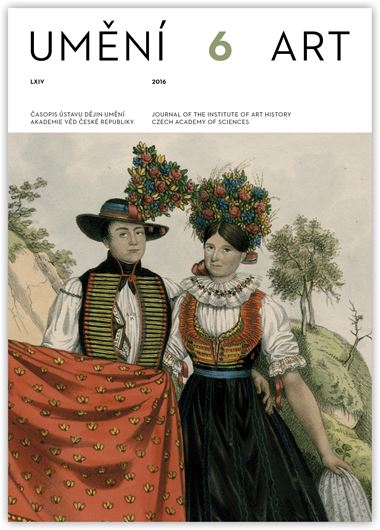Hana Tomagová
Die Wiederentdeckung des mittelalterlichen Wasserspeiers aus Goldenkron (Zlatá Koruna) auf Skizzen für die Edition Wiener Bauhütte
In 1884 the former Cistercian monastery and monastery church of the Assumption of the Virgin Mary in Zlatá Koruna was the destination of a study trip for a group of architects at the Academy of Fine Arts in Vienna on which they were guided by Professor Friedrich von Schmidt (1825–1891). The primary objective of the study trips that Schmidt introduced at the academy in 1861 as part of practical instruction in architectural drawing was to teach students in the field how to survey the state of an object and then to publish the final drawings in a series of publications by Wiener Bauhütte. In two of these pencil drawings that are now in the Graphic Collection at the Academy of Fine Arts in Vienna Schmidt’s student Andreas Nedelkovits (1858–?), who around the year 1900 was a teacher at the Royal School of Architecture in Vratislav, captured the appearance of one gargoyle from the turn of the 14th century that have now been lost. Based on these drawings and photographs from 1953 this gargoyle can be described as a ‘composite’ gargoyle formed by half a human figure ‘saddled’ by an animal. From a comparison of this animal figure with a similar detail of a gargoyle in the lapidarium of the cathedral in Cologne it is possible to hypothetically identify the type of animal and the circle of styles the gargoyle comes from, which are further evidence of the influence of French post-Classical cathedral architecture in Southern Bohemia. The realistic quality of the depictions in these drawings compared to other, usually idealised, iconographic materials helps significantly in determining the original appearance of details of the Cistercian church that have now been lost, and it also provides insight into the history of the Wiener Bauhütte publications, in which Schmidt’s students published some of their drawings. This resource also demonstrates the significance of the study trips taken by students of the Academy of Fine Arts in Vienna to study medieval art and architecture in the Czech lands.
Full-text in the Digital Library of the Czech Academy of Sciences:
https://kramerius.lib.cas.cz/uuid/uuid:0742702d-a963-41f9-8963-d22c65ad0868
< back

